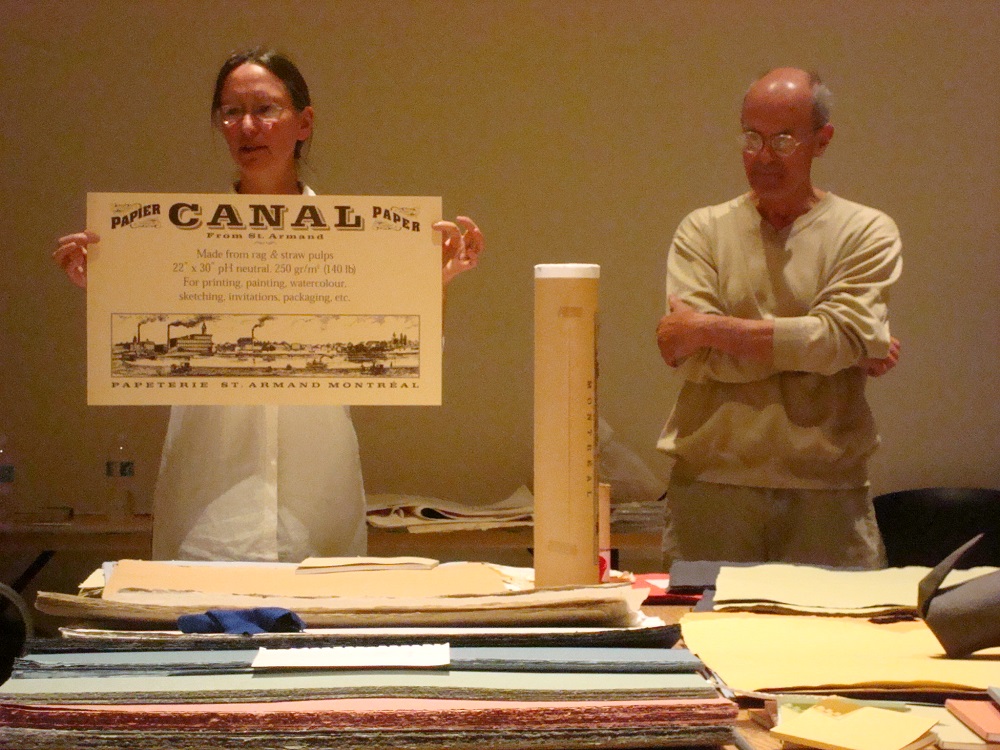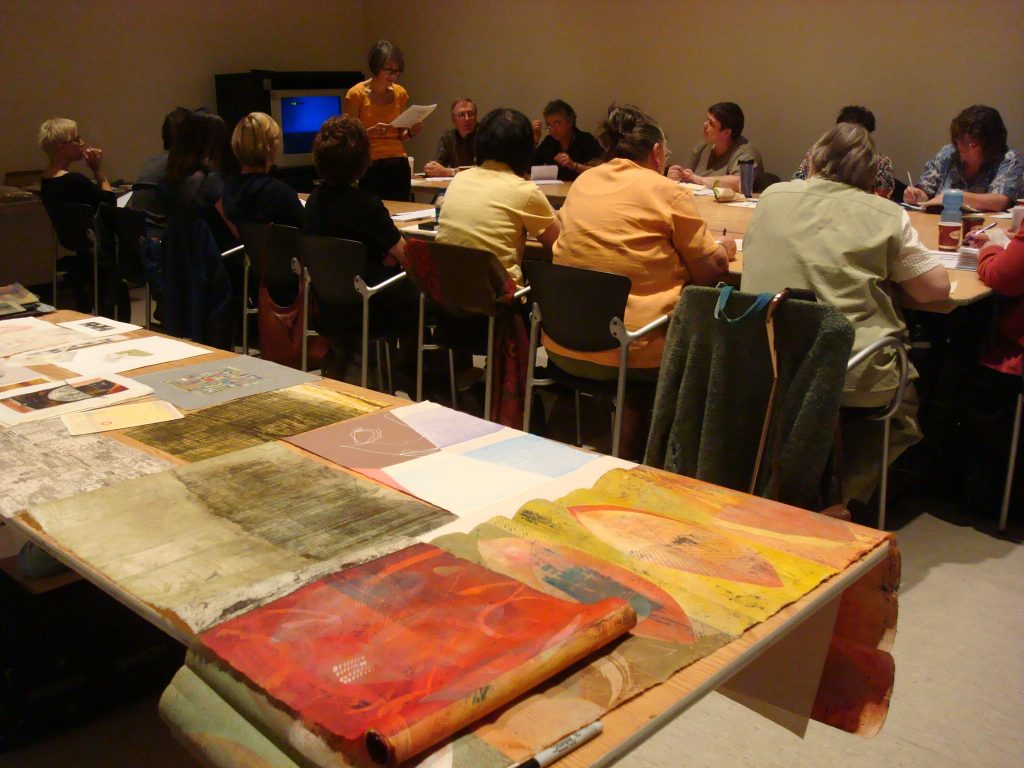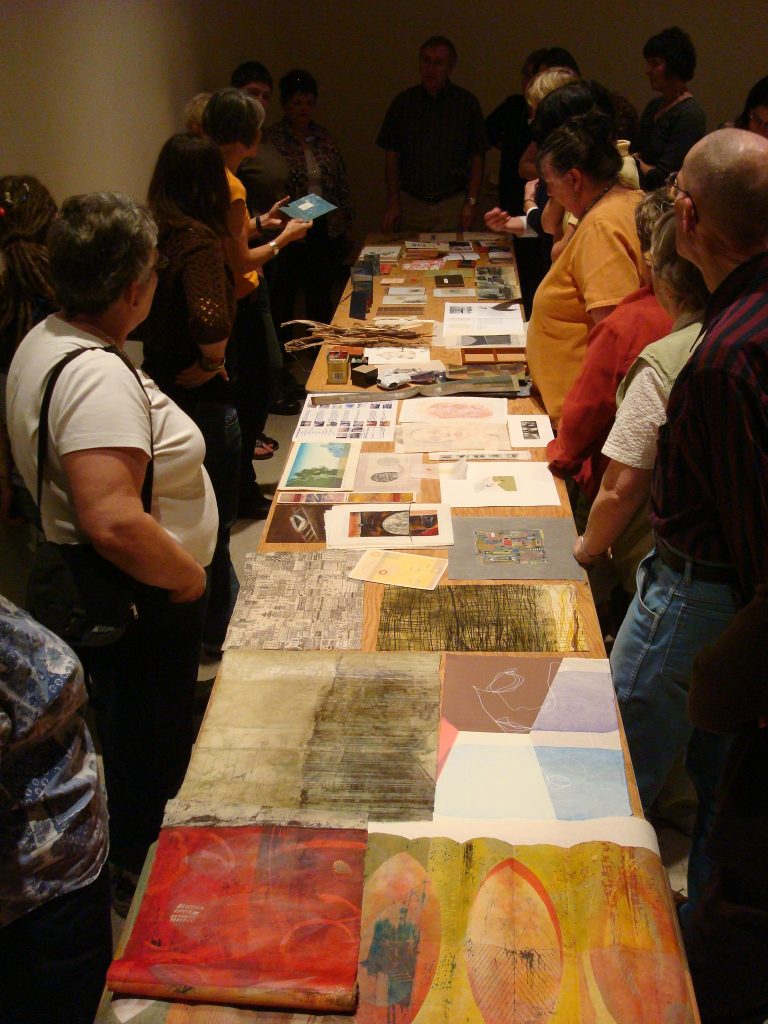The Paint Spot carries many handmade papers. Japanese Paper Place and St Armand are our favourites.

Paper Mulberry (Saa)
Modern artists, craftspeople, and hobbyists have vastly expanded the range of applications for mulberry paper, called Saa in Thailand and chiyogami in Japan. The most common uses are probably as cover papers for bookbinders, and as accent or envelope linings for invitations, but many other uses for handmade papers are possible and common.
Mulberry is a tree native to Northern Thailand. It is a persistent perennial and regenerates itself after each harvest. Making handmade paper from it is labour-intensive but worth it. Mulberry’s long fibers are ideal for creating strong durable papers. Talented papermakers ensure artists have an unlimited range of colours, textures, and patterns.
The handmade paper process
Artisans soak the bark and boil it with wood ash, before pounding it to a pulp. The pulp is put in a vat with plenty of water, dye, and inclusions like petals, leaves, grass, thread, and even other recycled papers. Skillful craftsmen submerge a screen into this solution and agitate it to create a perfectly even coating of the pulp mixture across the screen surface. The thickness or density of the pulp decides the thickness of the paper. A master paper maker will make exactly the same thickness every time, just by the feel.
A maker can add extra inclusions after the screen is then lifted out of the water and drained. Sometimes additional coloured pulp is poured onto the screen in patterns. Once the screen is fully drained it is flipped over and tapped to release the pulp. The pulp is flattened and blotted to remove excess water and then left to dry. The resulting paper is strong and beautiful.
What do artists do with handmade papers? Here are 54 ideas:
- Acrylics – prime with clear gesso or matte medium
- Birth announcements
- Block print
- Book sleeves
- Bookbinding
- Bookmarks
- Box making
- Business cards
- Calligraphy
- Card making
- Chigiri–e (ちぎり絵), a Japanese art form in which the coloured paper is torn to create images resembling watercolour paintings
- Collage, is a technique where the artwork is made from an assemblage of different forms and materials
- Decoupage, is the art of decorating an object by gluing colored paper cutouts onto it in combination with special paint effects, e.g., on trays, boxes frames, light switch plates, pots, shelves, tables, gourds and other objects
- Dioramas, three-dimensional miniatures or life-size scenes
- Dollhouse miniatures
- Drawer liners
- Encaustics
- Envelopes
- Flower pressing
- Folders
- Framing mats
- Gift tags
- Gift wrap
- Gold leafing or leafing with other metals
- Iris folding, a paper craft technique that involves folding strips of colored paper to form a design of which the center is iris-shaped
- Jewelry making
- Kirigami, the art of folding a sheet of paper and then cutting a pattern to reveal a silhouette
- Kite making
- Lampshades
- Mask making
- Mixed media
- Mobiles
- Note cards
- Oil pastel – Picasso drew on everything; so can you.
- Origami (折り紙, (from ori meaning “folding” and kami meaning “paper”), the traditional Japanese art of paper folding
- Packaging for festive parcels
- Papier maché
- Photo albums
- Placemats and table runners
- Resin castings
- Scanning for computer backgrounds
- Scrapbooking
- Screen dividers
- Screen print
- Sculpture
- Sew it just like fabric
- Soft pastel
- Stamping
- Tree decorations
- Wall decoration, frame and hang as art
- Wall paper
- Weaving
- Wedding announcements
- Window screens


